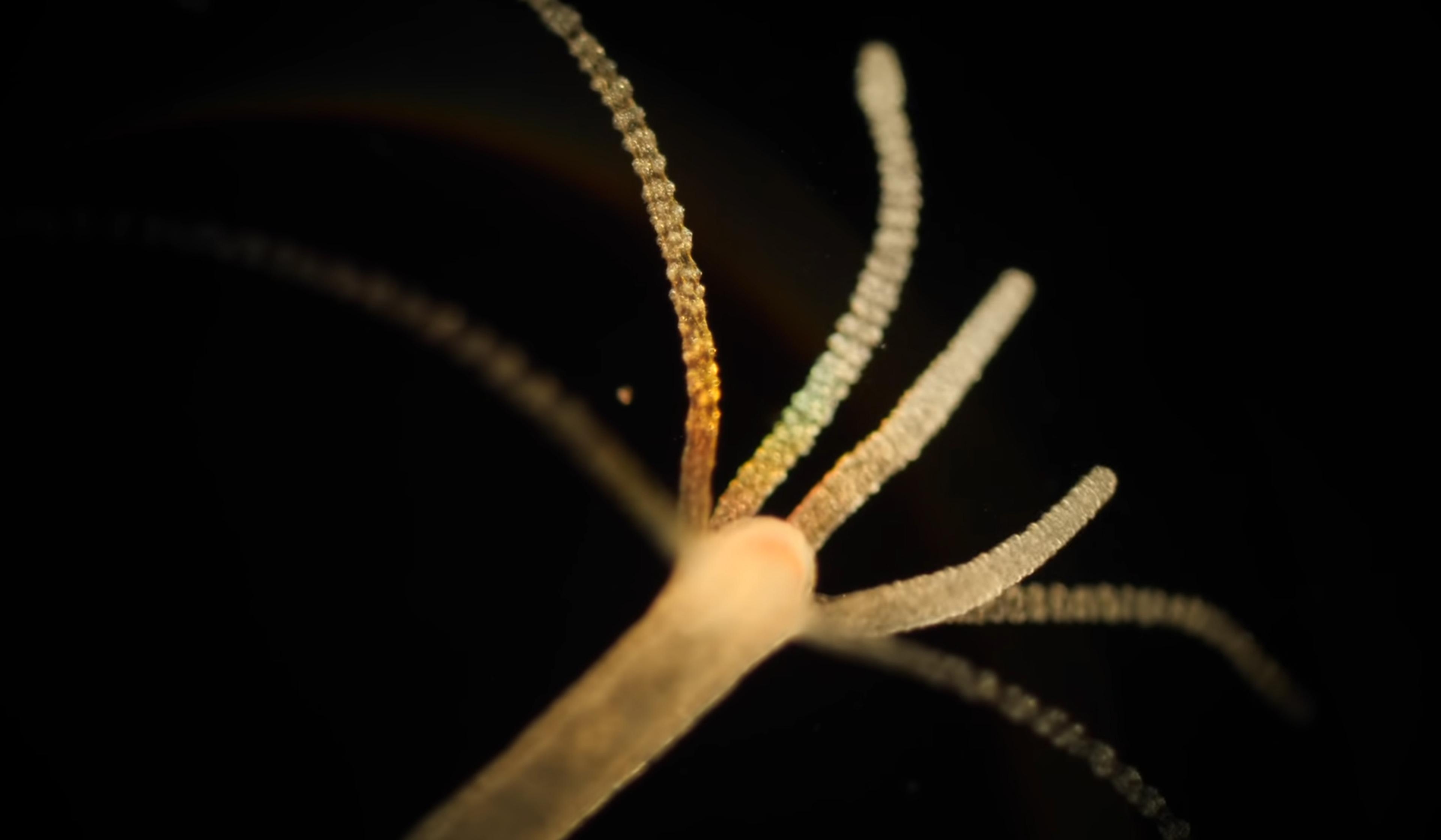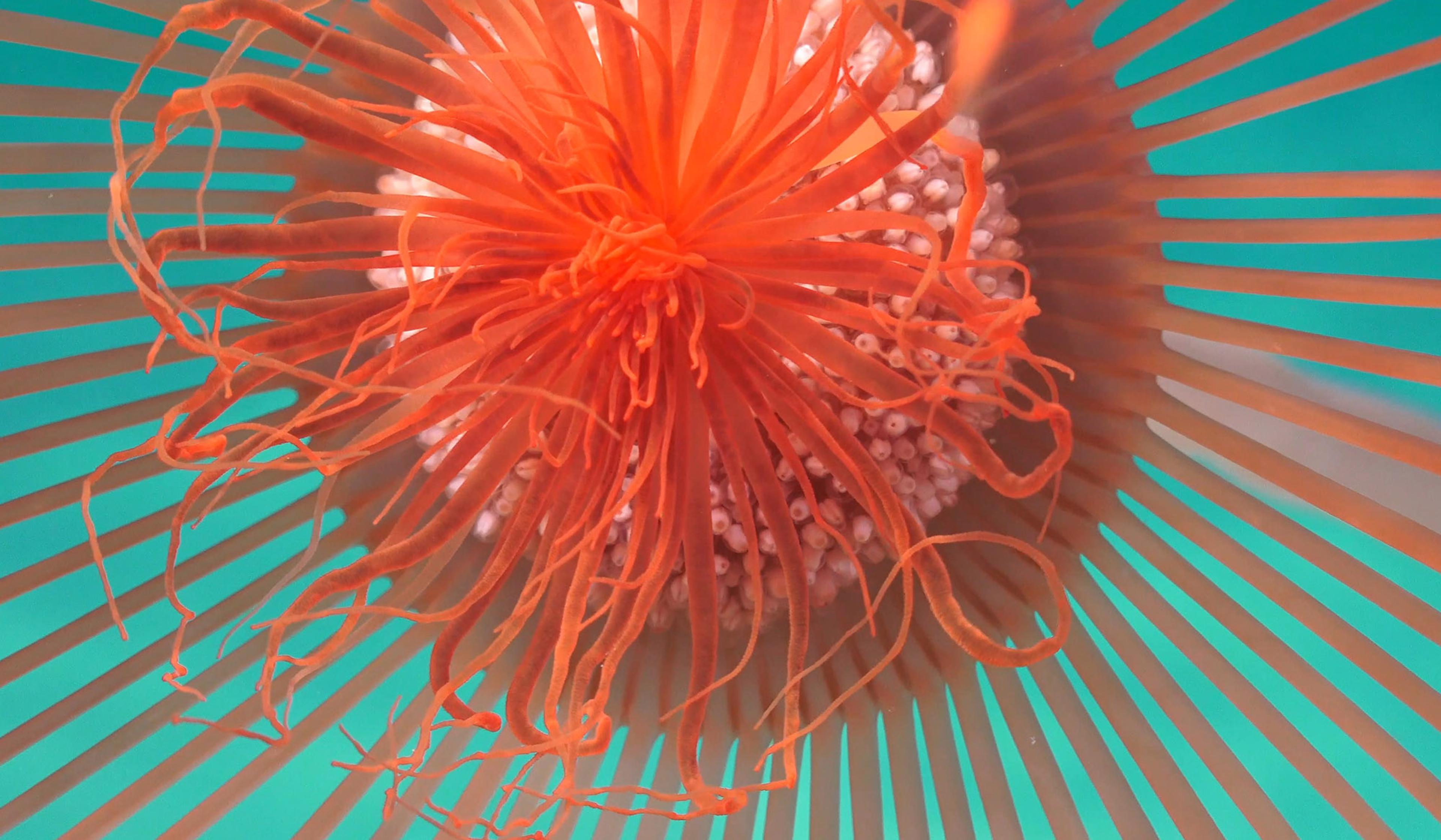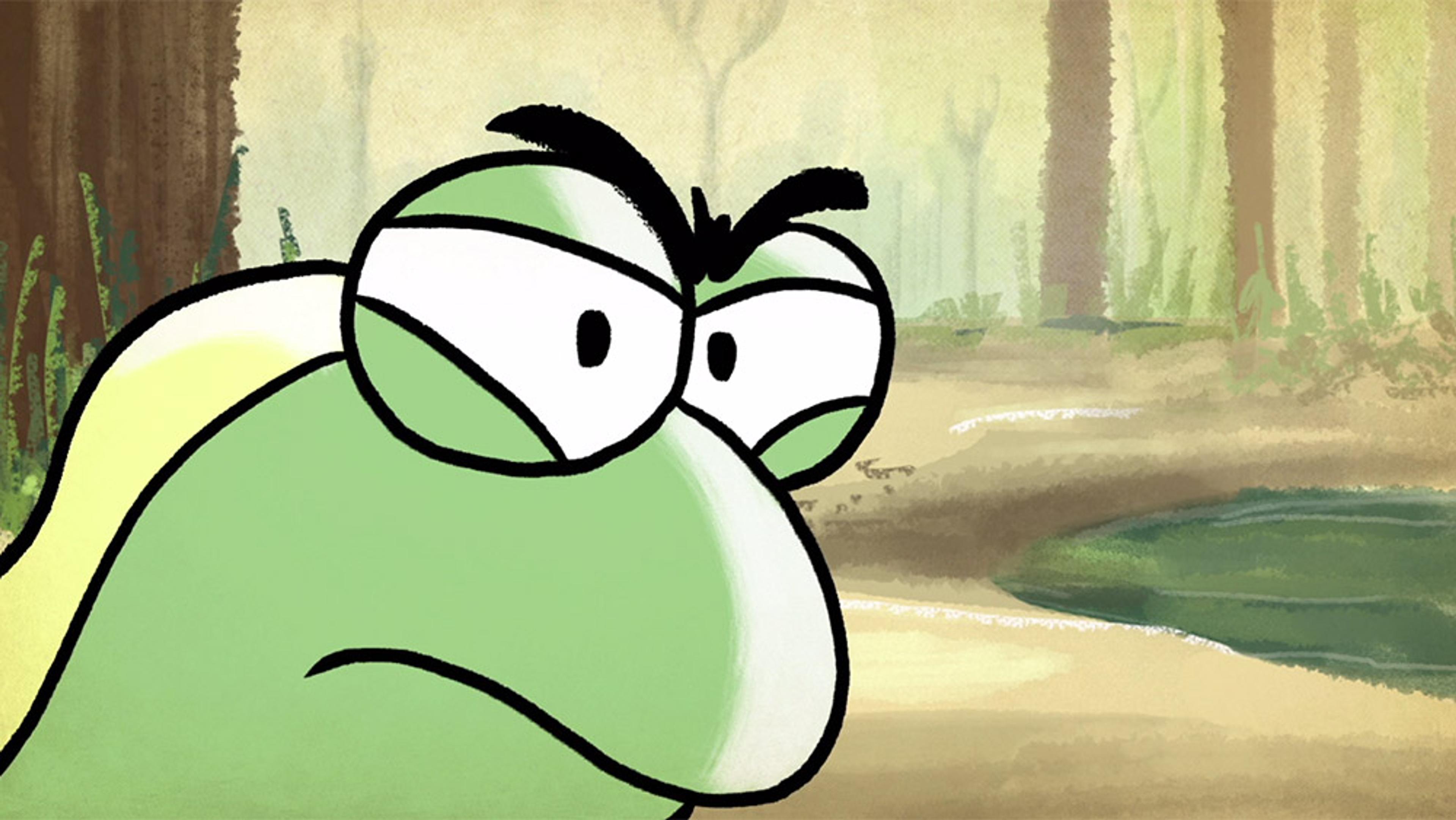Until recently, mainstream thinking in biology had long held that sponges were the first animal to emerge on the evolutionary tree. But over the past decade, a new wave of research argues that ctenophores, a phylum of sea invertebrates found in saltwater around the world, might be our oldest and most distant relatives. Featuring entrancing camerawork of ctenophores recorded by the US artist Charles Lindsay at Hope Island in British Columbia, Canada, Fieldwork: Comb Jellies offers a close-up look at the translucent creatures that have prompted the tree of life to be redrawn. As the jellies move across the frame, the quick movements of the fused cilia (or ‘comb rows’) they use to propel themselves diffracts the light into a rainbow, giving them an ethereal glow. Combining audio recorded at source with processed sounds from a variety of underwater microphones, Lindsay’s glitchy and immersive sound design gives the impression of a deep-sea swim on an otherworldly planet.
For more on ctenophores, read the Aeon essay Aliens in Our Midst.








